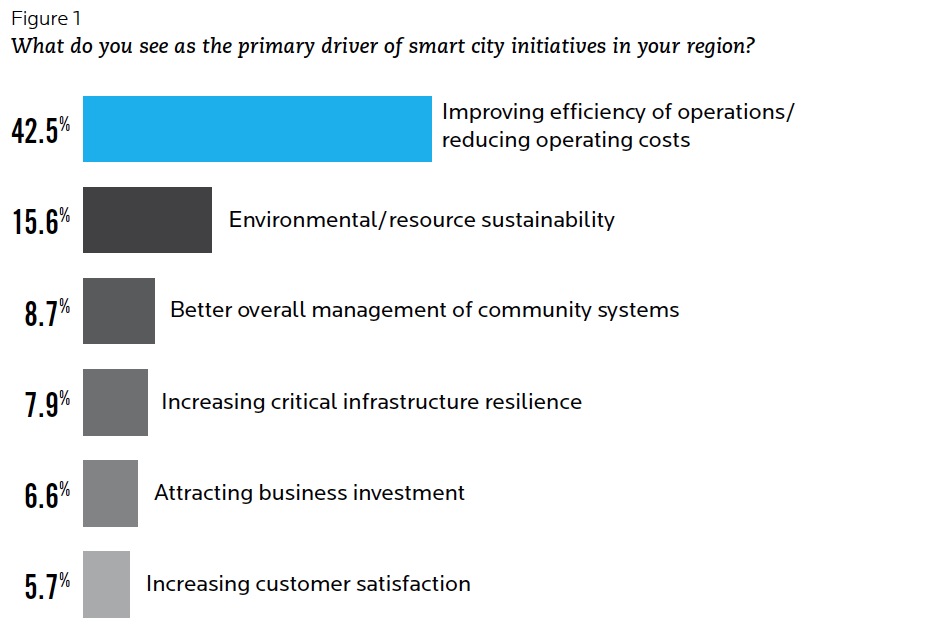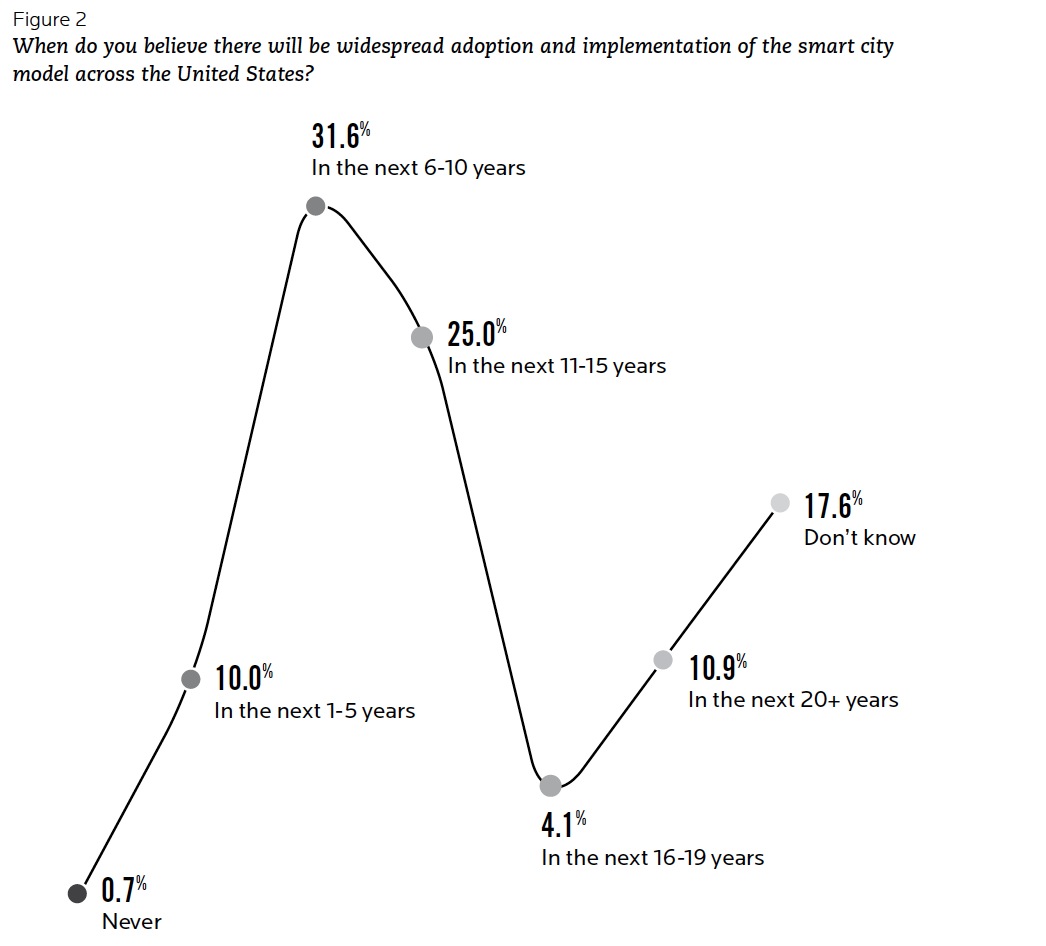BLACK & VEATCH
Executive Summary: Making Connections
By Fred Ellermeier
Communities and utility service providers are moving dramatically toward a smart city ideal. The proliferation of smart devices and utility automation efforts coupled with the expanded use of data analytics is transforming the development and delivery of key infrastructure services. These advances are reshaping the customer-utility relationship and making service providers more responsive, efficient and resilient.
Developing a framework for the smart utilities that provide critical infrastructure services is key to defining the smart city. Data in this 2015 Strategic Directions: Smart Utility report indicates consistency in the goal of the smart city, even as a common definition of a smart city remains elusive. For water utilities, smart city meant “smart water” and resiliency planning. For municipalities, sustainability of operations and resources took the lead. These differing outlooks are reflected in the goals set by companies initiating smart city projects. Improving efficiency and reducing costs are paramount for some respondents (Figure 1). Others seek to satisfy environmental sustainability goals or improve relationships with customers to resist competitive threats.
Advancing the IP Front
What began as a few connected devices placed on utility networks is now widely recognized as an essential element of the Internet of Things (IoT). Empowered by investments in telecommunications infrastructure, smart utility and smart city efforts provide evidence that we are on the cusp of a new, data-driven future. Legacy equipment continues to cycle out as Internet Protocol (IP)-based technology creates new opportunities to improve system efficiency. As networks converge, comprehensive planning becomes key to ensuring the capability and security of utility networks.
Essential Automation
Regardless of type, automation – and the infrastructure on which it is based – delivers value to utilities and end users alike. Supervisory control and data acquisition (SCADA) systems are widely automated; however, despite the significant attention given to greater network connectivity, this report identifies a surprisingly large number of organizations that have yet to move forward with smart infrastructure plans.
Understanding the role of automation is especially important as nearly over one-third of respondents predict that the United States will see the implementation of a smart city model within 6-10 years (Figure 2). The proliferation of smart city deployments will multiply. Hurdles to reaching smart city status are diverse, but overcoming the return-on-investment challenge is essential to improving performance and strengthening relationships with customers.
Smart Utility/ Smart Industry
This report includes an overview of what a smart utility might look like as well as the policy implications of data sharing and data security and the financial considerations involved with collaboration. A similar exploration of manufacturing and other commercial stakeholders was carried out by outlining the concerns and opportunities for industry in a smart city scheme.
Recognizing the global implications and need for smart utility and smart city planning, this report also provides insights from India as the country focuses on supporting the needs of a growing urban population.
Smart Utilities, Smarter Cities
Now more than ever, the increasing use of technology offers utility operators greater understanding of their networks and how customers consume power, water, natural gas and data. Forecasting historically required large teams to examine past operations and create an operations snapshot, often long in the past. Now, predictive analytics, or Adaptive Planning, is redefining how complex systems can be managed through rapid analysis of real-time information.
Such agility is especially important in urban areas, where service demands are placing significant stress on aging infrastructure. Some of the most aggressive moves toward automation are coming from utilities serving large populations. For instance, this report finds that nearly 40 percent of organizations serving populations of 2 million have announced a smart city initiative, a significantly higher percentage than institutions serving smaller areas.
All of these advances will propel utilities and, in turn, help to create smart cities. This 2015 Strategic Directions: Smart Utility report captures a time of exciting change and great challenge as major service providers become more intelligent about their operations and explore opportunities to improve resiliency, costs, safety and resource efficiency. Yet, this report also finds many service providers moving warily, challenged by market shifts, regulatory action and the effects of years of run-to-fail management. While some providers are moving faster than others, it is increasingly clear that technology will have a foundational role in evolving all utilities into smart utilities and creating the foundation for future smart cities.
Download full version (PDF): Smart Utility Report
About Black & Veatch
bv.com
Black & Veatch started 1915 as a two-person partnership between former University of Kansas classmates Ernest Bateman Black and Nathan Thomas Veatch. The company began with 12 employees with offices in Kansas City, Missouri. It landed two large contracts, one in power and one in water, in its first year…Today, the company continues to experience strong growth across its core markets. Black & Veatch currently has a global workforce of more than 9,000 working in over 100 offices worldwide with projects completed in more than 100 countries on six continents.”
Tags: Black & Veatch, Utilities








 RSS Feed
RSS Feed